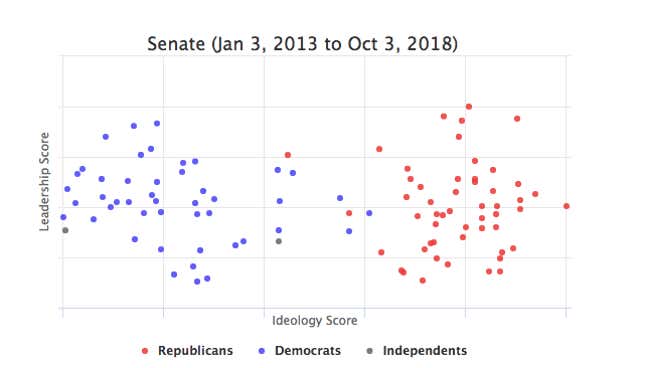A vote on Brett Kavanaugh’s nomination to the US Supreme Court is expected this weekend, after Senate majority leader Mitch McConnell filed a late-night motion for a “cloture” vote to be held tomorrow (Oct. 5).
What does cloture mean, exactly, and why does it keep coming up in Senate votes?
The cloture process essentially limits debate on any bill or motion before the Senate, establishing a 30-hour window before a final vote must be held, and eliminating the ability of opposing Senators to filibuster—to hold the floor indefinitely—and delay a vote. The exact timing of the cloture vote tomorrow hasn’t been made public yet, although some reports say it is expected to happen in the morning. A final vote on Donald Trump’s nominee to serve on America’s highest court could then happen as soon as the next day.
What is a cloture vote?
Cloture is basically a vote to go ahead on a vote, a procedural oddity of the Senate that allows a majority leader to “push past a recalcitrant minority,” as Pew Research Center explains. Cloture is a “is a blunt tool for managing the Senate,” as Brookings Institution’s Sarah Binder put it.
Traditionally, 60 senators must vote for a cloture motion to pass, but Democrats, in 2013, and Republicans, in 2017, invoked the “nuclear option,” which allows a simple majority of just 51 senators to approve it (even though official Senate rules still say 60 votes are needed).
Cloture votes are now more prevalent
In the 2013-14 Congress, after Barack Obama won his second term, there was a massive rise in cloture motions. They more than doubled to 252 from 115 in the previous session. In 2013-14, a Republican minority led by McConnell filibustered dozens of Obama nominees, and Democrats used cloture votes to push past them.
The rise in cloture votes illustrates how the “the politics of presidential nominations have changed dramatically in the past few decades,” Pew Research Center said.
At the beginning of the Trump administration, Democrats retaliated, filibustering Trump nominees. Republicans used cloture to push past those moves. They even invoked allowing a simple majority to confirm Trump’s nomination of Supreme Court justice Neil Gorsuch, which set a new precedent for the cloture vote.
The jump in the use of cloture is rooted in the fact that there’s very little middle ground between the political parties. Once known for the stability of its debate procedures, the Senate turned into a “parliamentary arms race” in the early 2000s, Brookings Institution said in 2010: “Each party assumes that the other party will fully exploit its procedural options.”
McConnell escalated the situation, vowing to make Obama a “one-term president” in 2010. When that failed, McConnell moved to obstruct his agenda and block Obama’s last Supreme Court nominee in 2016.
The Senate is more deeply divided, ideologically, than perhaps at any time in modern history. GovTrack, which follows members’ positions on various issues, shows there is very little overlap between Republicans and Democrats—and therefore little room for compromise or agreement. The chart below, which assigns a liberal-conservative score to each senator based on the bills they have co-sponsored, illustrates the wide spread:

